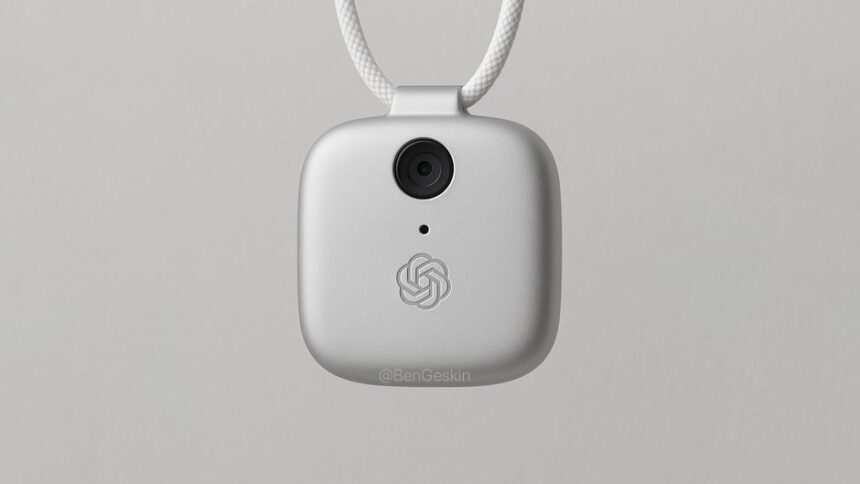Jony Ive, the legendary designer who helped shape Apple’s most iconic products, is encountering unexpected turbulence in his partnership with OpenAI. Their first hardware collaboration — a screenless AI device intended to redefine how people engage with technology — is experiencing technical hurdles that have delayed progress. Reports from the Financial Times confirm that while the device remains under development, both Ive’s design studio and OpenAI’s engineering teams are facing complications that challenge their ambitious goals.
What’s Happening & Why This Matters
The device, known internally as part of an AI-powered personal assistant platform, is envisioned as a handheld AI companion that interacts through voice, camera, and environmental awareness rather than traditional screens or keyboards. The concept reflects Ive’s long-standing belief that our connection to technology has become too transactional and overstimulating. He and OpenAI CEO Sam Altman have repeatedly stated that they aim to create a more natural, intuitive, and emotionally aware interface — one that restores simplicity and calm to daily interactions with machines.
However, developing such a device is proving to be far more complex than expected. Engineers are grappling with the challenge of teaching the AI to understand context — knowing when to listen, when to respond, and when silence is more human than speech. A person familiar with the project told the FT, “We don’t want it to feel like your weird AI girlfriend.”That comment captures the tension between technical sophistication and emotional authenticity — a balance that defines Ive’s design philosophy and OpenAI’s ambition.
The Screenless Revolution That Isn’t Ready Yet
Ive revealed portions of his vision during a recent OpenAI Developer Conference, describing technology as something that should “bring joy, calm, and connection — not distraction.” He argued that the relationship between humans and devices has grown unhealthy, dominated by addictive interfaces and endless notifications. His goal, he said, is to craft tools that “just work” — intuitive enough to disappear into the background, but intelligent enough to feel meaningful.
This philosophy is a natural evolution of the minimalist ideals that guided his tenure at Apple, where he helped design products like the iMac, iPod, and iPhone. Yet unlike those devices, Ive’s OpenAI collaboration rejects visual dependency. It focuses on interaction through voice recognition, AI-driven reasoning, and ambient awareness. The goal is to produce something that feels organic — not a gadget, but a companion.
The technical challenge is immense. To build a product that senses its environment through cameras and microphones, the AI must process and interpret live data in real time while maintaining strict privacy protections. OpenAI’s engineers are working on a balance between responsiveness and restraint — ensuring that the device feels aware without being intrusive. Privacy experts have already begun raising alarms about any system that depends on continuous sensory input, especially one developed by a company known for training data-hungry AI models.

From Design Idealism to Real-World Friction
The project originated when OpenAI quietly acquired Ive’s hardware startup, io, earlier this year. The acquisition was seen as Sam Altman’s move to bring AI into physical form, marking a new phase in OpenAI’s expansion beyond software. Altman reportedly described the partnership as “the biggest leap our company has ever taken.” But translating OpenAI’s conversational brilliance into a tangible consumer product is proving daunting.
OpenAI’s engineers are reportedly testing early prototypes that explore how users respond to a screen-free experience. Unlike existing smart speakers such as Amazon’s Alexa or Google Assistant, Ive’s creation is designed to interpret visual cues, spatial data, and emotional tone. The AI must react not just to language, but to presence — an interaction model that requires breakthroughs in contextual computing and multimodal understanding.
Some insiders say the project’s ambition recalls past experiments, such as Amazon’s Echo Look and Humane’s AI Pin, both of which struggled to define practical use cases. The difference here lies in scale: OpenAI’s compute infrastructure and Ive’s design heritage give the venture a credibility others lacked. Still, that combination also magnifies expectations — and potential disappointment — if the final product fails to deliver an emotional connection that feels authentic.
A Designer’s Emotional Blueprint
Ive has been candid about his dissatisfaction with the emotional toll of modern devices. In interviews, he’s described a growing sense of “despair” among users overwhelmed by constant digital noise. He sees technology as a mirror of human behaviour — and believes that mirror has become distorted. “We can redesign the relationship,” he told a private audience in San Francisco earlier this year. “Technology should respond to us as humans, not treat us as data points.”
This idealism is central to the collaboration’s mission. The team is exploring how AI-driven empathy might become a design principle — not just a feature. By integrating conversational tone, emotional inference, and memory, the device could create experiences that feel responsive rather than reactive. Yet for many observers, this vision flirts with philosophical peril: if machines can simulate empathy sufficiently, do users risk mistaking imitation for genuine understanding?
The Technical and Ethical Crossroads
OpenAI’s rapid expansion in AI research has already raised ethical debates over privacy, consent, and data ownership. Embedding those same principles into a consumer device amplifies those concerns. If this product becomes a success, it could transform how people live with AI — not as a tool but as a companion. However, it also deepens the question of who controls that companionship: the user, or the algorithm trained to anticipate them.
Privacy experts and designers alike are calling for transparency in how such systems collect and process data. The project’s success depends on establishing trust — a theme that echoes through Ive’s public remarks. “We have the opportunity to not just fix what’s broken about our tools,” he said, “but to redefine how they exist in our lives.”
TF Summary: What’s Next
The Ive–OpenAI partnership stands as one of the most daring experiments in human-centred technology. Its success will depend on whether users can feel intimacy and trust in an interface that literally has no face. If OpenAI can combine technical sophistication with Ive’s timeless sense of design empathy, this device could herald a new category of interaction — one where intelligence is invisible, but presence is unmistakable.
MY FORECAST: The road to that future remains uncertain, and the team’s early setbacks show that even the world’s best minds are still learning how to make machines feel human.
— Text-to-Speech (TTS) provided by gspeech


